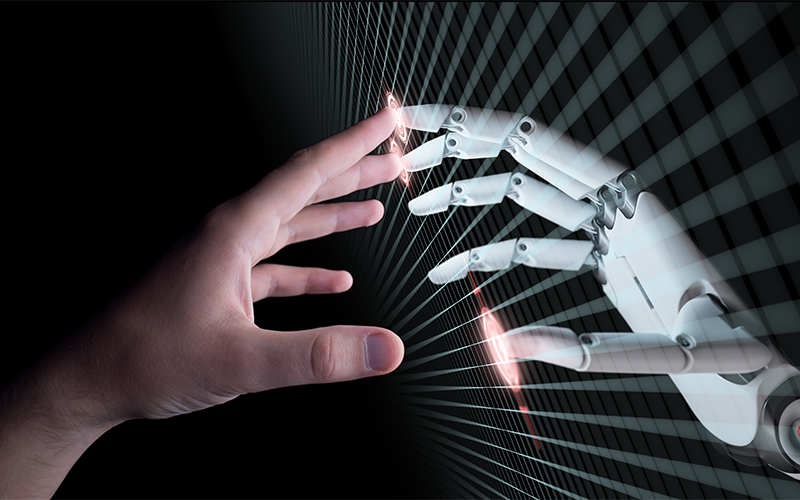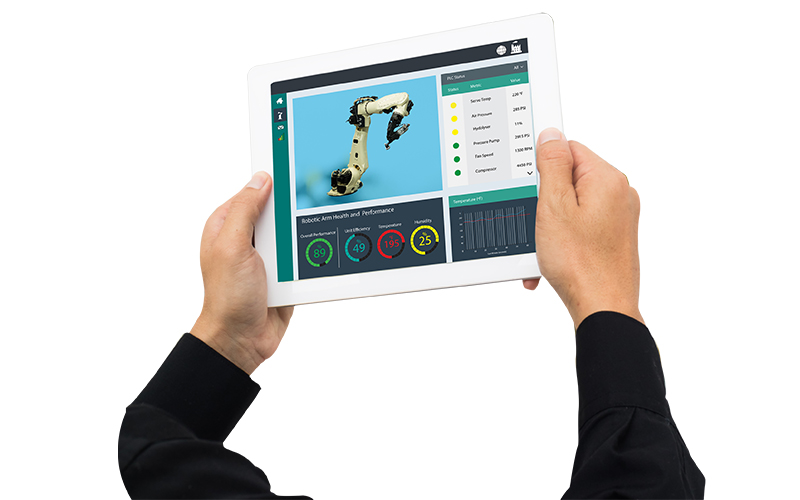BUSINESS TRANSFORMATION
The impact of AI on cybersecurity
Over the past few years, there has been rapid growth in the instances of cybercrimes. Data reveals that cybercriminals can penetrate 93% of business networks. Businesses are trying new strategies to secure their networks, systems, and devices. Unfortunately, hackers are getting smarter and are superseding these strategies to achieve their purpose.
In the wake of the pandemic most organizations are adopting a digital-first approach as it helps them overcome the limitations of the legacy systems and bring agility*. The thrust on digital transformation across the globe has given an impetus to cyberattacks on data, networks, and devices. The increased exposure to cyberattacks is because of the use of technologies such as IoT and the cloud for the exchange of data. The cloud environment and embedded technologies do not provide a secure environment for data, making businesses vulnerable to cyberattacks.
Most businesses are currently deploying conventional software to secure their data, network, and devices. Unfortunately, hackers keep using innovative methods to break in. This is the reason that 68% of business leaders feel their cybersecurity risks are increasing. Businesses are thus looking to leverage innovative technologies like AI to mitigate cybersecurity threats. Some of the technologies in AI that have come to the forefront for this purpose are Machine Learning (ML), Natural Language Processing (NLP), and Context-Aware Computing. These technologies can be applied on-premise or in the cloud.
AI-based cybersecurity systems leverage a variety of software including APIs for speech, vision, and language recognition to name a few. In addition, machine learning algorithms are used for effective cybersecurity applications.
The growth of AI in the cybersecurity market is projected to reach a whopping $38.2 billion by 2026 from $8.8 billion in 2019. AI-based technologies can analyse many events in minimal time and identify cyber threats. This analysis helps prevent cyberattacks. The advantage of using technologies like AI and ML is that they continually learn and improve from the analysis and experience to predict cyber threats before they occur.
How does AI work in Cybersecurity?
- AI extracts large volumes of structured and unstructured data.
- Machine learning and deep learning technologies are leveraged to process this data.
- AI learns from this process facilitating software development to mitigate cybersecurity risks.
- AI software executes the needed steps in a matter of minutes and provides cybersecurity professionals valuable insights to make informed actions.
Technologies such as AI and ML automate threat detection and provide valuable insights to cybersecurity professionals. A collaboration of artificial intelligence and human intelligence facilitates quick and effective responses to cyber threats and minimizes instances of cyberattacks.
How can the cybersecurity industry benefit from artificial intelligence?
Reduces manpower requirement
Businesses across the globe are facing the risk of cyberattacks. Therefore, there is a surge in the demand for cybersecurity professionals. However, there is a dearth of skilled cybersecurity professionals. Automation with AI and ML in cybersecurity reduces the dependence on cybersecurity professionals. These technologies support cybersecurity governance in the organisation by reducing manpower requirements.
Saves time
An enterprise needs to continually monitor its cybersecurity data to prevent cyberattacks. Traditionally used software takes time for data analysis causing delays in the detection of cyber threats. Data reveals that in 2021 the time to identify a data breach was 212 days!
AI-based technologies extract and analyse data in a few minutes. The availability of data enables cybersecurity professionals to respond in a timely manner to cyber threats. Quick action can reduce the instances of cyberattacks.
Detects new threats
AI offers predictive analysis and pattern recognition to detect even small changes that can lead to a data breach. This information enables cybersecurity professionals to take action to prevent cyberattacks.
AI-based systems can also identify the areas that are vulnerable to data breaches so that cybersecurity professionals can allocate tools to prevent them.
Prevents fraudulent transactions
AI and ML keep sensitive data safe to avoid fraudulent transactions. For instance, in the case of credit card fraud, these technologies are quick to detect any unusual activity, uncustomary purchases made from a different device, or any odd transactions. In such cases, AI helps verify credit-card holders and minimize the number of fraudulent transactions.
In conclusion
AI-based technologies go far and beyond to empower cybersecurity professionals to mitigate risks. Artificial Intelligence provides the most concrete cost mitigation in data breaches helping businesses save $3.81 million per breach.
However, these risks continue to rise because cybercriminals deploy AI to achieve their ends. They also use technologies to predict the security measures that are likely to be implemented and look for more advanced techniques for hacking. Hence, the cybersecurity landscape is constantly evolving to find new methods to prevent cyberattacks. Human and technology collaboration is the way ahead to provide a safe and secure environment for a digital framework to thrive.
*For organizations on the digital transformation journey, agility is key in responding to a rapidly changing technology and business landscape. Now more than ever, it is crucial to deliver and exceed on organizational expectations with a robust digital mindset backed by innovation. Enabling businesses to sense, learn, respond, and evolve like a living organism, will be imperative for business excellence going forward. A comprehensive, yet modular suite of services is doing exactly that. Equipping organizations with intuitive decision-making automatically at scale, actionable insights based on real-time solutions, anytime/anywhere experience, and in-depth data visibility across functions leading to hyper-productivity, Live Enterprise is building connected organizations that are innovating collaboratively for the future.






